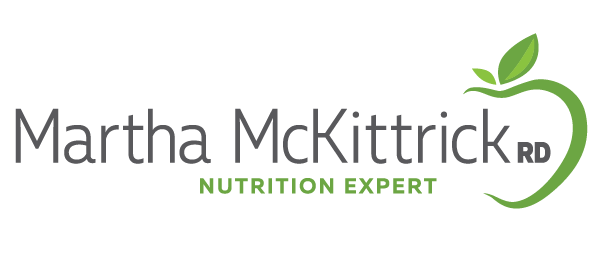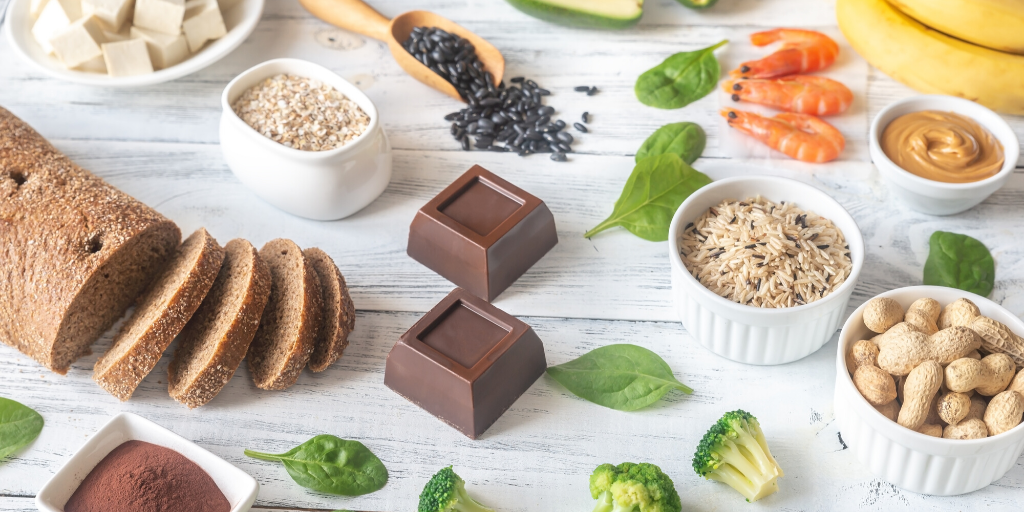Endocrine Disruptors and PCOS; What You Need to Know

Nutrition and lifestyle are the first line treatments for PCOS and can help balance hormones, decrease insulin resistance and inflammation and improve gut health. But there’s one more area you may be overlooking … sneaky chemicals called endocrine disruptors. You probably come in contact with these chemicals on a daily basis. Not only can they make your symptoms worse, it’s possible they contribute to causing PCOS. You’re probably thinking “ all I need is one more thing to think about !” But we’ll break it down for you. Read guest blog post by nutrition grad student Amber Narcisse on endocrine disruptors and PCOS; what you need to know.
What is the Endocrine System?
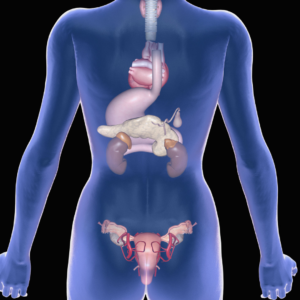 In order to understand what endocrine disruptors are, you need to understand the endocrine system. Our endocrine system consists of glands that produce and release hormones within the body. These hormones act as chemical messengers that target certain organs or tissues to regulate multiple body functions like your metabolism, temperature control, growth and fertility. Our hormones play an integral part in our health and help us maintain homeostasis. And as you probably know all too well, PCOS is an endocrine disorder. Hormonal imbalance is a defining feature of this condition … hence the MANY symptoms. Unfortunately there are other substances that can disrupt this balance and cause numerous health issues no matter the dosages. These substances are called endocrine disruptors(EDs). And more disruptions in hormones is the last thing a woman with PCOS needs!
In order to understand what endocrine disruptors are, you need to understand the endocrine system. Our endocrine system consists of glands that produce and release hormones within the body. These hormones act as chemical messengers that target certain organs or tissues to regulate multiple body functions like your metabolism, temperature control, growth and fertility. Our hormones play an integral part in our health and help us maintain homeostasis. And as you probably know all too well, PCOS is an endocrine disorder. Hormonal imbalance is a defining feature of this condition … hence the MANY symptoms. Unfortunately there are other substances that can disrupt this balance and cause numerous health issues no matter the dosages. These substances are called endocrine disruptors(EDs). And more disruptions in hormones is the last thing a woman with PCOS needs!
What are Endocrine Disruptors?
Endocrine disruptors are substances, either natural or synthetic, that interfere with the body’s natural hormones, thus affecting the reproductive, neurological and immune systems. Growing research has shown the mechanism behind these hormone-altering chemicals and how it not only affects humans but also wildlife too. There are many chemicals listed as EDs but….
The three commonly known types are:
- Dioxin and dioxin-like compounds
- Bisphenol A (BPA)
- DDT and other pesticides
Certain metals such as mercury, arsenic, and lead can also disrupt your endocrine system.
Where are Endocrine Disruptors Found?
These substances can be found in a wide range of everyday items like food, toys, cosmetics, receipts, pesticides, plastics bottles, metal food cans and cleaners. They are also found in flame retardant and medicines. Exposure to endocrine disruptors can occur through ingestion, inhalation and skin contact. They disrupt your system by either copying other naturally-occurring hormones, blocking those hormones from their receptors or interfering in how they are made and controlled.
So how are you coming in contact with endocrine receptors on a daily basis? Probably, if you:
- Wear makeup
- Drink from a plastic water bottle
- Eat some food from a can (tuna, beans, soup).
- Go shopping and handle receipts
- Use cleaning products
- Reheat leftovers in plastics
Endocrine Disruptors and PCOS
Endocrine disruptors can wreak havoc on the endocrine system – especially when the endocrine system is already disrupted as it is in PCOS. Studies are suggesting there may be a connection between endocrine disruptors and PCOS – especially BPA.
Bisphenol A or BPA is an estrogen-mimic industrial compound that is widely produced in food and beverage packaging. Multiple studies report a strong relationship between BPA and the production of testosterone.
-These studies showed exposure of neonatal rats to BPA is linked with PCOS-like syndrome and dysregulation of insulin secretion/glucose metabolism.
-One study demonstrated evidence that BPA affects all women whether they had normal menstrual cycles or experiencing ovarian dysfunction. Elevated testosterone levels were observed among all women, characterizing PCOS.
-Another study concluded adolescents with PCOS had higher serum bisphenol A levels than controls, independent of obesity. Bisphenol A concentrations were significantly correlated with androgen levels, leading us to consider that bisphenol A might play a role in the aetiopathogenesis of PCOS in adolescents.
– This study concluded that higher BPA levels in PCOS women compared to controls and a statistically significant positive association between androgens and BPA point to a potential role of this endocrine disruptor in PCOS pathophysiology.
Dioxin is another persistent environmental pollutant found specifically in natural processes like forest fires or manufacturing processes of herbicides and paper bleaching. They can also be found in our food! According to WHO, the highest levels of these compounds are found in some soils and food especially dairy products, meat, fish and shellfish. They are highly toxic and are known to cause serious reproductive problems. In a current study, an increased frequency of PCOS was found in a generation of women, supporting evidence of transgenerational ovarian diseases following ancestral exposure to dioxin.
In summary, although the cause and effect of BPA and PCOS have not been demonstrated definitively, there does appear to be a link and more research is needed. Dr. Fiona McCullough, PCOS expert, feels there is a strong link, stating “chronic exposure to these chemicals, especially in pregnancy, may unmask and turn on genes for PCOS that will be seen at the time of puberty when hormones activate.”
Are women with PCOS more susceptible to endocrine disruptors?
Studies suggest that EDs like BPA are highly concentrated in women with PCOS than in those who do not have it. The correlation remains unclear. Future studies are needed to determine the direction of causality.
Tips On Reducing Exposure to Endocrine Disruptors
The problem is that right now there are not any good regulations when it comes to policy for endocrine disruptors. Although the United States Environmental Protection Agency created the Endocrine Disruptor Screening Program to regulate chemical substances, there is not a strong framework to support regulatory standards. So, you are probably wondering how can I reduce my exposure to EDs then? Here are some practical tips that you can follow in order to cut them out or at least minimize the presence of EDCs in your day to day life.
Plastics and Cans:
- Add no sippy cups or plastic baby bottles for children.
- Avoid plastic wrap when possible. Definitely avoid using it to heat food. Try using reusable beeswax wrap.
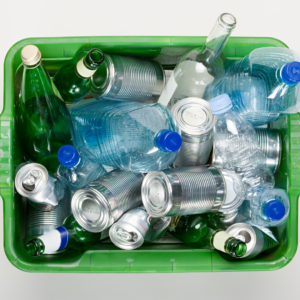 Do not use plastic water bottles that have heated up in the sun.
Do not use plastic water bottles that have heated up in the sun.- Refrain from using plastic containers even including BPA free plastics. Even though plastic containers may be BPA free, companies tend to use similar chemicals that are just as effective. I don’t want to discourage you from meal prep and batch cooking! Just don’t use those plastic containers. Instead use high quality food grade silicone, stainless steel or beeswax wraps for food storing. Good brands for storing include Stasher, U-Konserve and Pyrex glassware. Now if you HAVE to store food in plastic containers, just don’t reheat any food in the microwave in plastic. Put it into a microwave safe bowl. The same goes for storing hot food in plastic. At least wait until the food cools, then put it into the container. But try not to use plastic for food storage.
- Read labels. Avoid/Limit using items with recycling label #3 or #7 on it as well as items marked with “PC.” These labels are used to identify the types of plastics used in items. Not all plastics are recyclable or reusable. #3 contains polyvinyl chloride and #7 contains other plastics like acrylic, polycarbonate, nylon and fiberglass. Both groups are known to have multiple toxins that can leach into the products over time.
- Consider buying foods usually in cans in other forms (steamed lentils or tuna in pouches). Plastic pouches are made out of polypropylene plastic which is generally considered safe with a low risk of leaching.
Food and Cooking:
- Avoid dirty dozen – an annual list created by Environmental Working Group on pesticides in produce. Check out their website for more information.
 Increase your consumption of plant-based sources and cut down on animal products. As previously mentioned before, dairy products, meat and fish contain naturally occurring dioxins. Making half of your plate fruits and vegetables can reduce your intake of other sources of dioxin.
Increase your consumption of plant-based sources and cut down on animal products. As previously mentioned before, dairy products, meat and fish contain naturally occurring dioxins. Making half of your plate fruits and vegetables can reduce your intake of other sources of dioxin.- Choose organic, locally grown seasonal food. These foods required less preservation to stay fresh during transportation.
- Choose frozen instead of canned produce. Canned food items most likely contain BPA in the lining of the can for preservation. Choosing this option not only reduces your exposure to this ED but increases your nutrient intake. Frozen produce is usually picked during its peak season, therefore, still containing most of its nutrients.
- Peel all non-organic fruits/veggies if possible.
- Buy grass-fed, organic meats when possible.
- Avoid non-stick pans. They contain perfluorinated chemicals that are resistant to biodegradation. Better choices include stainless steel, ceramic or cast iron cookware.
Personal Care and Household Products
 Avoid parabens, 4-MBC and Benzophenone. We wear sunscreen to lower our risk of developing skin cancer due to exposure to UV rays. But, these chemicals are mostly found in sunscreens and have been linked to breast cancer! Read the label to avoid these ingredients and still secure protective benefits.
Avoid parabens, 4-MBC and Benzophenone. We wear sunscreen to lower our risk of developing skin cancer due to exposure to UV rays. But, these chemicals are mostly found in sunscreens and have been linked to breast cancer! Read the label to avoid these ingredients and still secure protective benefits.- Can also check your cosmetics on EWG website where there is a database called Skin Deep that provides tips and ratings on various personal care products.
- Use nontoxic makeup. I love makeup but even the type of cosmetics we use can play a role in our health. Listed nontoxic makeup brands include Well People, 100% pure and Kosas. They are a little bit on the pricier side but what we put ON our bodies is just as important as what we put IN our bodies.
- Avoid stain/water resistant coatings on clothing, furniture, carpets. These items contain perfluorinated chemicals that are resistant to biodegradation. The next time you go furniture shopping, choose furniture that is not marketed as stain resistant.
- Avoid synthetic fragrances. Products with just the word “fragrance” on the label can contain phthalates which are known to trigger cells to die. Adding fragrance to a product does not affect the efficacy of it, therefore you can choose fragrance-free creams, cleaning products and laundry detergents instead and still reap the benefits. Other ways include using fresh air or flowers indoors or adding citrus peels in your garbage bag. You can also follow this old tip – leaving an open container of baking soda in your fridge.
 Filter your tap water. Look for NSF certified filters to avoid heavy metals like lead and other hormone-altering chemicals. There are NSF certified filters as low as $25 dollars on Amazon for drinking water as well as certified filters for shower heads and refrigerators.
Filter your tap water. Look for NSF certified filters to avoid heavy metals like lead and other hormone-altering chemicals. There are NSF certified filters as low as $25 dollars on Amazon for drinking water as well as certified filters for shower heads and refrigerators.- Avoid using bleached coffee filter. Can result in a lifetime exposure to dioxin.
Other
- Consider shopping at different supermarkets where customers are notified about certain products containing EDs. Some merchants like Trader Joe’s grocery store, list a yes or no status for certain EDS in their products. How awesome would that be if other merchants followed the same model. The idea is not so far fetched. As consumers, we have the power to influence any supermarket.
- Try not to handle paper receipts. Even the ink on our receipt contains BPA. Better bet is to have the merchant email the receipt instead (or try not to touch it too much!)
- Advocate! Speak to your local agencies, governments and companies about endocrine disruptors and encourage them to implement a system that avoids further contaminating our water, food, soil and consumer products.
Bottom line
This post is not meant to stress you out thinking you can never wear regular make up again, use household cleaners or ever drink out of plastic bottles. The goal is to take small steps to cut down on exposure to endocrine disruptors in your body. Start with 1-2 steps at a time. Stay tuned for more research on endocrine disruptors and PCOS.
I’d love to hear your thoughts on this!
I’d like to thank Amber Narcisse for writing this blog post. Amber is a dietetic intern and currently studying public health nutrition at CUNY Graduate School of Public Health and Policy. She is an aspiring RDN interested in metabolic disorders, gut health, sustainable agriculture and program management. Her favorite things to do include dancing, listening to podcasts and eating.
public health nutrition at CUNY Graduate School of Public Health and Policy. She is an aspiring RDN interested in metabolic disorders, gut health, sustainable agriculture and program management. Her favorite things to do include dancing, listening to podcasts and eating.
References:
https://www.niehs.nih.gov/health/topics/agents/endocrine/index.cfm
https://www.ewg.org/research/dirty-dozen-list-endocrine-disruptors
State of the science of endocrine disrupting chemicals – 2012 by WHO/UNEP
https://toxtown.nlm.nih.gov/chemicals-and-contaminants/endocrine-disruptors
https://static.ewg.org/pdf/kab_dirty_dozen_endocrine_disruptors.pdf
Vogel JM. Perils of paradigm: complexity, policy design, and the Endocrine Disruptor Screening Program. Environ Health. 2005;4(1):2. Published 2005 Feb 8. doi:10.1186/1476-069X-4-2
https://learn.eartheasy.com/articles/plastics-by-the-numbers/
8 Steps to Reverse Your PCOS: A Proven Program to Reset Your Hormones, Repair Your Metabolism, and Restore Your Fertility by Fiona McCulloch
https://www.nrdc.org/stories/9-ways-avoid-hormone-disrupting-chemicals
RELATED POSTS
MEET MARTHA
I especially love problem-solving, whether it’s helping women defeat issues plaguing them for years, helping a busy executive find practical ways to get heart healthy, or providing tips to help you reverse diabetes. That’s why I’m on a constant quest to expand my knowledge by staying on top of the latest research.
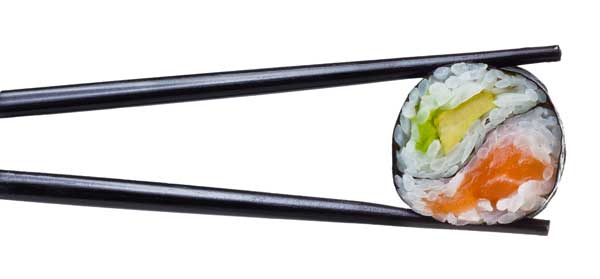
20 Ways To Eat Out 550 Calories or Less!
No time to cook? We’ve got you covered. Here are 20 healthy meals from a variety of cuisines that won’t pack on the pounds. Most of them also have less than 30 grams of carbs.
Subscribe to my newsletter and get this free download.
